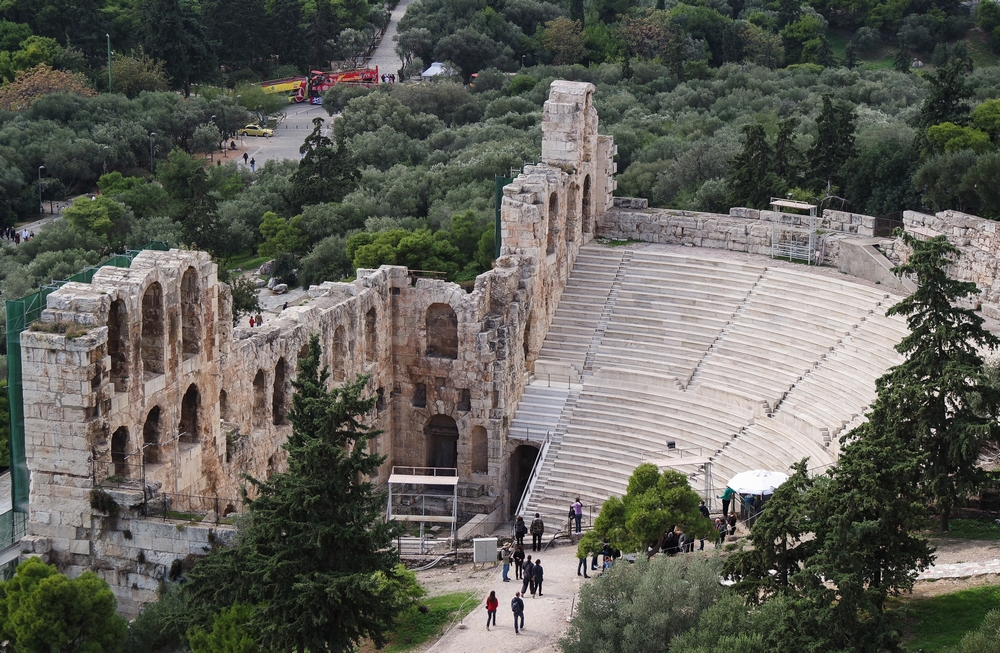Odeon of Herodes Atticus
Odeon of Herodes Atticus was made from limestone, raw stones and was lined with marble.
Location
Timeline
Modern and Contemporary era (1821 - )
Until the 19th century, only the upper part of the stage's wall and the auditorium stood out because it was covered with soil. It was agricultural land.
1848 Mid-19th century, excavations began by Kyriakos Pittakis.
1920 The first concert of the modern era, which was one of the French composer Charles-Camille Saint-Saëns.
1936 Summer cultural events were established.
1952 Restoration with Dionysos marble.
1957 Re-use. It became a venue of cultural events, mainly of the Athens Festival.
Ottoman era (1453- 1821)
Byzantine era (331 AC- 1453)
Roman era (30 BC- 330 AC)
160 A.D. The construction began after the death of Herodes Atticus' wife, Rigilla and was completed around 173 AD.
267 A.D. Destroyed by the Heruli.







Share